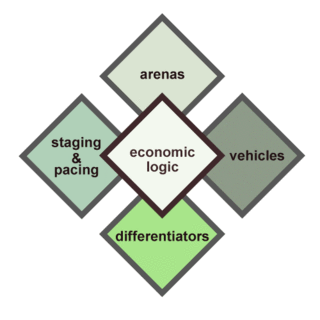Premise:
The premise of "Translating Strategy Into Action" is that understanding one's organizations strategic objectives and cascading those objectives throughout the organization into departmental and individual action plans can be a challenging task as the demand for limited resources continues to increase. Translating strategy must be communicated up and down the organization from the board room to the mail room as well as across the value chain to partners and suppliers. Contained in this book are practical tools and techniques for the translation and execution of an organization's strategic objectives into actions that produce measurable results. Topics covered in the book focus on the principles of:
- Be a student.
- Create meaning.
- Be honest.
- Think capabilities.
- Get comfortable with change.
What I learned:
That there are a number of strategic models mentioned in the book which can be use when developing an organization’s strategic position. One model that is highlighted is the Hambrick and Fredrickson's strategic model. This model covers these five key areas:
- Arenas: Where will we focus our attention and our activities?
- Vehicles: How will we get there?
- Differentiation: How will we win?
- Staging: What will be our speed and the sequence of moves?
- Economic Logistics: How will we make money?
The authors also encourage managers to play the strategy game. In the strategy game, players must be concerned about the strategic directions of their organization. Basically, how the company intends to do business and pursue opportunities. The player also focuses on the elements of the company’s business model and how they work together. The goal is to orchestrate the business model to create value for their customers in the economic environment that the business is operating in and while improving the organization's capabilities. These capabilities are a combination of the organization's resources plus its core competencies, which must be improve to add economic value to the organization’s stakeholders.
The pace of change in the global markets have also decreased the amount of time strategies remain valid. Currently, business plans are made based on a 3, 5 or 10 year planning horizon; however because of the rapid pace of competition, disruptive technology, innovation and globalization organizations must increase the frequency for analyzing and reevaluating their corporate strategy.
The author poses a couple of important questions to consider when considering the capabilities required to execute your strategy. They are:
- What do we need to be capable of executing our strategy and achieve our goals?
- What unique combination of work processes, systems, structures, people and work environments would you need to have available to translate your strategy into action steps?
Free Assessment
Finally, another tool that is referenced is the current and vision situation comparison table which I’ve displayed below. In the right column, you would list your vision based on your industry, customer, organization, operational excellence and business results. In the left column, you would list your current situation regarding these items. In the bottom two rows, you list your common threats and what you need to do to close the gap between your current situation and vision.
Example of current and vision comparison table:
|
Current State |
Vision |
|
Focus Area |
|
|
People |
|
|
Organizations
|
|
|
Operational excellence |
|
|
Results |
|
|
Common Threads |
|
|
Gaps |
|
Conclusion:
In conclusion, translating strategy into action requires that one continuously reviews the organization’s strategic direction and breaks down the strategy into manageable chunks of work. These chunks are then decomposed into deliverables and milestones that the company’s staff can manage and execute. "Translating Strategy Into Action" is a quick read pack with lots of great advice, examples and case studies of organizations that have developed action plans that enabled them organization execute their strategic objectives successfully.




One thought on “PSGS 016: Book Review: Translating Strategy Into Action”
I think this is one of those books, you can read and get good info from start to finish.